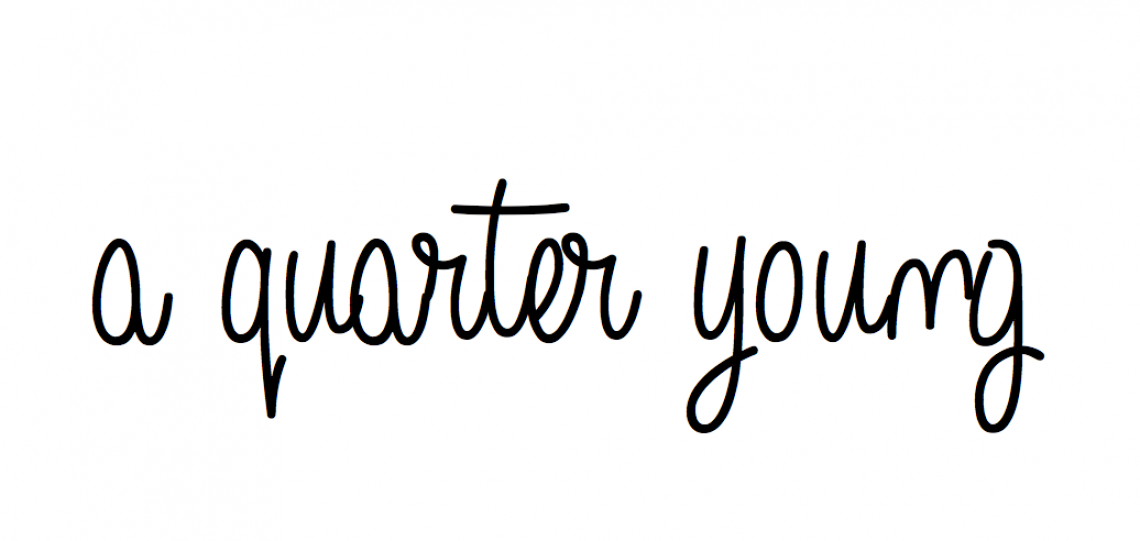I have always felt like I am too much. Too much for most people. One of my first memories of my mouth running the show, I was sitting in a classroom in elementary school, desks pushed together for group work. I remember having fun. I remember feeling bubbly and vibrant and giggly. Until I heard the teacher’s voice over the chatter from across the room: “Hilary, that’s enough. Move back to your seat.” I felt the icy chill of shame wrap around my tiny grade four limbs and I froze. I looked down at my lap and muttered, “I’ll be quiet, it’s ok,” but obviously the teacher wasn’t having it. “Hilary – what did I just tell you? Move back to your seat NOW.”
Don’t you love those memories that sometimes bubble up and echo behind your eyes and in your ears in the middle of the night? That’s a strong one. And I completely understand the teacher’s motive – I was talking, loudly, and disrupting my group’s work. I most likely wasn’t on task and wasn’t helping anyone. That moment has burned into my brain as one of the earlier shame-filled experiences where I immediately felt, “other.”
Fast forward 12-years, sitting in a chair in a naturopath’s office, having finally decided to take a step toward feeling better about my physical and mental health. I had been miserable for years with stomach issues and anxiety. I’d been struggling with simple day to day tasks, feeling like I should be able to handle life better than I felt I was. And then, she asked the question. “Have you ever been diagnosed with ADHD?”
I think I laughed out loud. See, my brother was diagnosed at a very young age with clinical ADD. At the time, procedure was to medicate with Ritalin and call it a day. My mother refused, knowing the side effects and the toll the drug can take on a young mind. I remember mornings where it would take 15 extra minutes to get out of the house because Mackenzie was having a fit.
I remember the look on my dad’s face trying to play bad cop to mom’s good cop, and get the damn kid out the door to the place he hated more than anything, to sit him behind a desk to pretend to be a normal kid for eight hours.
Mackenzie was the classic ADD diagnosis – he would not focus in structured situations. He was a brilliant little guy – loved bugs and trains and planes, brilliantly schooling us with his technical knowledge and slaying video games. His comedic timing kept us in stitches and always used physical stuns and skits to make light of most of the struggle he faced. We called him the mini Jim Carrey. This, to me, was ADD. So when I was asked by a health professional if I had ever been diagnosed with not only the same “ailment” as my brother, but the stereotypically “hyper” version, I laughed. Repeatedly.
“But I’m not hyper. I’m lazy. I’m struggling to get out of bed, to keep motivation to get anything done. I did incredibly well in school. I don’t think so.”
My naturopath nodded and made notes.
“You did well in school? Good grades? Overachiever? Perfectionist?”
“Yes, yep, yes.”
“When did the anxiety start?”
“Last year of university, just before I graduated. Once my schedule was lighter.”
“Sounds like you’ve been busy enough to skirt around the issue for a while. But this is a classic presentation of ADHD in an adult woman.”
Cool. Cool cool cool cool cool. I laughed again.
“I mean, I joke all the time that I’m ADD. I forget things. I lose my train of thought or the topic in a conversation really quickly. You need a flow chart to follow my thoughts. But I don’t know that this explains the anxiety or depression.”
I left the appointment with a host of instructions, mostly diet related and more focused to my current digestive issues. We fell off the topic of ADHD and I didn’t think much of it. Until years later, when I finally read an article detailing an adult woman sharing her struggle with ADHD. And everything clicked.
It was like reading my own biography. I read through her recount of feeling inadequate, “other” and struggling to keep pace with a very demanding society where “busy” is the baseline for success. Gone were the assumptions and mental images of a hyper child unable to keep their chill.
Adult ADHD presents differently than in children. The symptoms and behaviour matched so closely to my life, it was like having someone place a cape over my shoulders, whispering “Relax – this is why.”
ADD and ADHD (which have now, from what I’ve learned, combined to describe the same diagnosis, interchangeably) present in people in a variety of ways. There is no right or wrong to a diagnosis – just a handful of common behaviours and feelings that tip that scale from, “just a bit disorganized,” to, “my executive functions have left the building.”
For me, the biggest red flags have always been feeling scattered and overwhelmed. I could write an entire thesis in one night, no problem, but to get me out of bed feeling well-rested, with a proper morning routine and feeling ready for the day? You’d need a miracle. I would be told things by friends or my partner that would just fly over my head. I would get incredibly bored with tasks that weren’t stimulating or required hyper-focus (something those with ADHD possess as a superpower!).
While struggling with the basics, I would become incredibly frustrated, moody, impulsive, defensive and lash out. Finishing a project to completion? Nah, something shiny would distract me and before I knew it, I’d have 10 projects requiring completion and none of them interested me in the least. Worse than that, the guilt and shame of knowing I’d dropped the ball would create a physical reaction to those looming deadlines, and projects that were non-negotiable to finish would require dragging me through mental anguish to wrap up a few sentences or close out a few files.
I would play the torturous game with myself, promising that I would be better tomorrow. Next week. Next month. That things were just stressful and once the hectic schedule calmed down, I would be better. I would do better.
And until then, I would pretend. I would put on the face of someone I envisioned having her shit together. I would spend hours on Pinterest compiling beautiful spreads of inspiring routine lists and meticulously clean living rooms, hoping to propel my brain into a place of action instead of constant reaction. I became an expert at white lies to cover up my pitfalls.
“My email was playing up, I’m so sorry,” became a themed season. “I’m leaving in five!” was a cruel joke I played on myself and others. “I can totally meet you at the gym at 5:00 a.m.” HAH – that’s not even a funny joke. Mornings were (and still are) the enemy, most days.
I dreamed of the day that I could handle what others could seemingly handle without even thinking about it. I dreamed of organization and praise for being so, “pulled together,” instead of shouldering the reputation I was earning of, “always late, never reliable.”
I could feel the burden of others pulling away out of repeated hangouts falling through, cancellations, and expectations that I wouldn’t show up. Conversations with long time friends that went a little something like: “I won’t chase you. If you aren’t making the effort, I’m not willing to either.”
It’s incredibly difficult to maintain friendships when basic requirements of Return Thy Text Message just don’t seem to make the to do list. I began to really internalize a lot of the frustration that was surrounding my behaviour. When friends, family, and partners had expectations that were not met (or were met, but 10-minutes late), I would hide out of fear of letting them down. This only made most people in my life retreat. I felt completely alone, and completely isolated. And from what I understood before my diagnosis, I was doing this to myself. It was all my fault.
A solid kick in the gut came from a very close friend who said offhandedly, “You just need to find someone who will put up with your mess.” I don’t think I’ve ever forgotten those words, because to me, I was the embodiment of an incurable mess. To make matters worse, I knew my potential. My inner voice was screaming to prove that I was worthy of love, praise, attention, and happiness. But my outward behaviour just couldn’t match the light I felt inside. And then it went out.
To be continued in a two-part series.

Written by Hilary Spencer, wedding and portrait photographer hanging out in Toronto.

